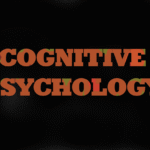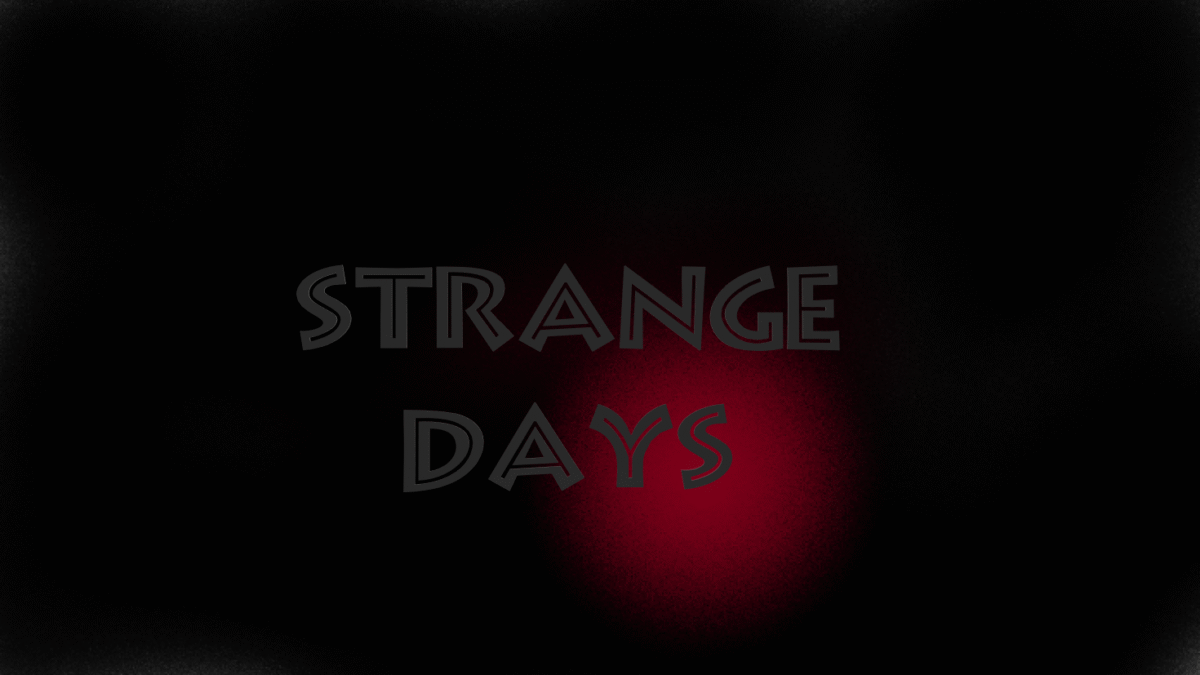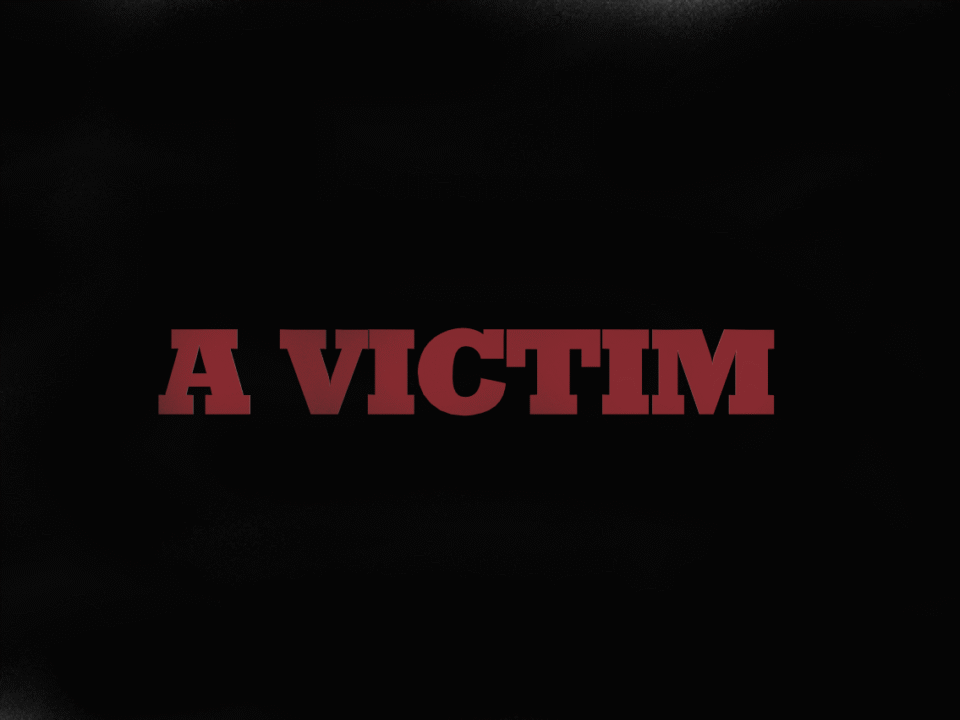Therapeutic
Talking about sex and sexuality in therapy
Talking about sex and sexuality can be challenging for clients and counsellors alike. Even though sex is overtly visible and present in many aspects of daily life, therapists often feel that sexual matters are difficult to raise with clients (Verhoeven et al., 2003) or lie beyond the scope of their practice (Binik & Meana, 2009).
Similarly, clients who can discuss many intimate aspects of their lives may struggle to name sexual difficulties or talk about sexuality (Quilliam, 2012). Understanding the many feelings that may be present in the therapy room may help these conversations feel less daunting.
Culture strongly shapes how we express sexuality and sex. Conversations about sex carry many layers of stigma and can be steeped in narratives of shame and secrecy that have historically dominated this landscape.
There is something different, and difficult, about talking about sex – whether with friends, partners, health professionals, or clients with whom we are working.
Sex and sexuality are central aspects of identity and experience for many people: ways in which they express their desires and key aspects of themselves, and seek pleasure, status, power and/or acceptance (de Botton, 2012).
However, discussions around sex and sexuality are often neglected or marginalised in training and in the therapy room. Just as therapists need to be able to communicate about these issues with clients, investigative interviewers and forensic practitioners also need to be able to talk with offenders, suspects, victims and witnesses about sex and sexuality, particularly in the cases of sexual abuse and assault that we covered in the previous chapter.
In this chapter we mainly focus on therapy and counselling contexts, but throughout you might like to reflect on how similar issues and suggestions are also relevant in criminal justice contexts.
This chapter explores what is difficult and challenging about talking about sex and sexuality and how and why these conversations can feel different from other aspects of therapeutic work.
We then overview ethical concerns around sex and sexuality in the therapy room. These range from interpersonal challenges where feelings of attraction and arousal can affect professional practice, through to boundary transgressions such as sexual relationships with clients.
In the second half of this chapter, we overview working with sexual difficulties, and across sexual and gender diversity. Problems with sex may present as the primary focus of therapy or may co-occur with other health, psychological or forensic concerns.
Past experiences of sexual violence or abuse, pain or difficulty during sex, concerns about sexuality and intimate relationships are not uncommon in people attending counselling.
We also explore ideas around ‘normal’ sexual functioning and reflect on attitudes and expectations that may affect therapeutic work with sex and sexuality.
Factors that affect and shape consent are a continued theme, as in the previous chapter. It is helpful to think about how consent is negotiated around the therapeutic contract and process, and how skills and confidence in talking about sex can facilitate sexual consent.
We also explore social understandings of sex and gender as these narratives powerfully shape the range of behaviours and identities, we ‘consent’ to embody and enact.
Therapy for survivors of CSA
Regarding CSA victims who experience negative mental health symptoms, research suggests that survivors benefit from specialised mental health care evaluations and associated therapy (Honor, 2010).
Numerous empirically supported therapy options for treating psychological trauma and PTSD exist (see SAMSHA’s National Registry of Evidence-Based Practices, 2016).
However, Trauma-Focused Cognitive Behavioural Therapy (TF-CBT) (Cohen, Mannarino & Deblinger, 2006) and Eye-Movement Desensitisation and Reprocessing (EMDR) (Shapiro, 2001) are the two psychotherapies recommended by the World Health Organisation for the treatment of PTSD (WHO, 2013).
TF-CBT involves the delivery of individual sessions to both the child and a non-perpetrating parent or guardian, as well as dual caregiver/child sessions.
The tenets of TF-CBT are represented by the acronym PPRACTICE which mean that they include: Psychoeducation; Parenting skills; Relaxation; Affective (emotional) modulation;
Cognitive coping and processing; Trauma narrative; In vivo mastery of trauma reminders; Conjoint child–parent sessions; and Enhancing future safety and development (Cohen et al., 2006).
The approach used for the more therapeutic aspects of the sessions is CBT, which you will read more about in Chapter 14. Multiple randomised controlled trials have demonstrated the efficacy of TF-CBT in reducing PTSD symptoms (Cohen et al., 2006) even among children as young as 3–6 years (Scheeringa et al., 2011).
EMDR is an integrated psychotherapy that helps people to access and process disturbing past life events and present triggers (things like sounds or sights that bring back memories of the trauma and cause intense emotional and physical reactions) (Shapiro, 2001).
EMDR involves clients recalling a distressing image while receiving sensory inputs, such as side-to-side eye movements. It has been supported by many empirical and case studies testing its effectiveness with children with PTSD (Rodenburg et al., 2009) as well as the treatment of those with intellectual disabilities and limited verbal capacities (Mevissen, Liebengood & de Jongh, 2011). We will finish this section by considering a case example to demonstrate how EMDR works in practice.
Child sexual abuse
Child sexual abuse (CSA) refers to the sexual victimisation of children and adolescents perpetrated by caregivers, other adults, or peers (Finkelhor et al., 2014). CSA encompasses a continuum of sexually abusive experiences ranging from voyeurism (people watching children for sexual gratification) to rape occurring during childhood or adolescence.
Estimates of the extent of CSA vary widely due to differences in factors like how studies define sexual abuse, the age group of children included in the study, and whether victimisation is examined over the lifetime (i.e. whether it ever happened) or during a period (e.g. whether it happened during the previous year).
Two meta-analyses reviewing hundreds of studies from Australia, Europe, North America, Africa, Asia, and South America provide global estimates of CSA ranging from 18% to 19.7% for girls and 7.6% to 7.9% of boys (Pereda et al., 2009; Stoltenberg et al., 2011).
Intersectionality
An increasingly influential theory in recent years is intersectionality – the idea that class cannot be separated from other aspects of social position and identity, such as ethnicity, gender and age (Crenshaw, 1991).
We must therefore try to think of how class interacts with these other factors, so that a working-class person, for example, also has a certain gender, a certain age, a certain ethnicity, and so on, and that all these factors work together to shape who they are
Each intersection, i.e. combination of these factors, represents a certain position in the social structure, and is associated with a certain identity. As we have seen, both position and identity are important in explaining class differentials in crime and mental health problems.
Acknowledging intersectionality avoids the fallacy of assuming that all people from a certain social class are the same. This is an emerging field of research and so there are few studies.
Using US data, Rosenfield (2012) looked at the interaction between gender, ethnicity and class in leading to differences in mental health (the so-called ‘triple jeopardy’ hypothesis), and found that black women, especially in higher-class positions, had lower rates of depressive symptoms compared with white females.
She found some evidence suggesting that these low rates are due to black women in higher-class positions attaching greater importance to the self. Green and Benzeval (2011) found that social class differences in anxiety and depression widen with age in the West of Scotland, while Mangalore and Knapp (2012) found that lower income had a particularly strong effect on the prevalence of common mental health problems for African Caribbean, Pakistani and Bangladeshi people.
These findings suggest future research in this area would benefit from a nuanced consideration of how socio-demographic factors work together to lead to mental health outcomes.
Arguably, the intersection of class and ethnicity is especially important since ethnic minorities are more likely to come from working-class backgrounds, especially in the US (Crimmins, Hayward & Seeman 2004), which in part helps to explain why ethnicity is a more prominent concept when discussing social disadvantage there than class.
Social class and mental health
As this book has set out to demonstrate, the way that behaviour is categorised as deviant is not just limited to crime. Mental health problems are also a type of deviance in the sense that they involve the infraction of social norms and rules.
Many early studies demonstrated a link between social class and mental health problems. One of the first was by Faris and Dunham (1939), who found that the poorest parts of Chicago had higher rates of treated schizophrenia and substance abuse disorder as measured by admission data.
A classic US study by Hollingshead and Redlich (1958) found that those in lower class positions were over-represented in treatment and were more likely to enter treatment via referral by official agencies such as the courts as opposed to choosing to enter treatment themselves.
They were also more likely to have physical treatments such as shock therapy rather than organic treatments such as psychotherapy.
More recent evidence from the Adult psychiatric morbidity in England, 2007 survey shows that those with the highest household income were less likely to have common classified mental health problems than those with the lowest household income (McManus et al., 2009).
For psychosis, prevalence rates were 0.1% among those in the highest income quintile compared with 0.9% in the lowest quintile.
How might social class differences in rates of mental health problems be explained? There are three main theories. The first is that it is something about lower social class circumstances that leads to poor mental health (social causation).
For example, in their classic study, Faris and Dunham (1939) proposed that the poorest parts of Chicago had higher rates of classified mental health problems due to social isolation and loneliness, while Hollingshead and Redlich accounted for the association between class and mental health problems by reference to both adverse childhood experiences and differing levels of stress (Busfield, 2011).
Nowadays research would recognise a range of social causes (or ‘social determinants’ as it is now often framed) as influencing mental health across the life course, including childhood experience (and even pre-natal experience), work and family life, and older age (Marmot et al., 2010).
These include material deprivation (e.g. damp housing; Clark et al., 2012), poor working conditions (e.g. little control or autonomy and low pay;
Siegrist et al., 2009), neighbourhood conditions (O’Campo, Salmon & Burke, 2009) and wider socio-political factors (Mattheys et al., 2016). A comprehensive list of social determinants can be found in the report by the World Health Organisation (WHO, 2014).
The second explanation suggests that it is not that lower class circumstances lead to mental health problems, but that mental health problems lead to lower social class circumstances. Those who develop mental health problems ‘drift’ down the social hierarchy (social drift hypothesis).
According to Eaton (who was referring to schizophrenia in particular): ‘Drift is the process whereby schizophrenics undergo downward class mobility after the onset of schizophrenia due to disability in the competition for employment’ (1980, p. 149).
Recent evidence suggests that social drift only explains a small part of the association between class and mental health problems (Hudson, 2005).
The third main type of explanation is that those in lower class positions are more likely to have their behaviours and actions labelled as mental health problems (labelling theory – see also Chapters 3 and 7), or in other words, pathologized.
Hollingshead and Redlich (1958) found that the lower social classes were more likely to receive a diagnosis of psychosis (typically schizophrenia or bipolar disorder) whereas the higher social classes were more likely to receive a diagnosis of neurosis (typically depression or anxiety).
Once behaviour is viewed as a mental health problem it comes under the auspices of medical intervention and control, which in some cases can have more damaging effects than the behaviour/problem itself (so-called ‘iatrogenic’ effects).
The starkest historic example of this was the institutionalisation of the ‘mentally ill’ in asylums, where they were often subject to all kinds of bizarre and often inhumane treatments (see Chapter 2),
including hydrotherapy, sterilisation, malaria fever therapy, shock therapies, and lobotomy (Braslow, 1999).
In a well-known experiment, Rosenhan (1973) sent pseudo-patients to psychiatric hospitals to show how psychiatrists often mis-diagnosed them as having mental illnesses and were therefore far from accurate in their diagnoses.
Combined with Hollingshead and Redlich’s finding concerning the more likely diagnosis of schizophrenia among people the lower social classes, this suggests that people from such classes have suffered injustices in the mental health treatment system, and not necessarily due to the conscious or deliberate intentions of particular individuals.
Self-care for professionals doing rape work
Individuals who work with survivors of sexual victimisation often report experiencing ‘vicarious trauma’ (Martin, 2005). This may elicit negative emotions such as anger, fear, and loss of trust in others and impact upon their personal relationships. In addition, practitioners often experience professional burnout and can lose their energy for this kind of work.
Therefore, self-care is vital for individuals who work in sexual offending. According to Wasco, Campbell and Clark (2002), ‘self-care refers to proactive strategies, or routines, that professionals use to offset the negative aspects of working with trauma victims’
Self-care coping strategies might tap into an individual’s cognitive, physical, spiritual/philosophical, social, and/or physical resources. For example, practitioners might benefit from short-term methods such as meditation or deep breathing as well as long-term strategies like exercise, journalling, or expression via art or other forms of creativity.
Many practitioners benefit from debriefing with a trusted support provider after particularly difficult interactions. Self-care also includes setting boundaries between home and work life and balancing the time and attention spent on one’s work responsibilities versus personal life and enjoyable activities.
For practitioners with personal histories of sexual trauma, self-care is paramount. As a ‘wounded healer’, a practitioner has the unique ability to ‘use the knowledge acquired through [their] own suffering in the service of clients’ recovery’ (Zerubavel & Wright, 2012, p. 489).
The value of survivor-practitioners can be particularly salient when advocating for or treating survivors of sexual trauma, which has the potential to be uniquely stigmatising.
However, helping others overcome tragedies similar to one’s own can result in traumatisation, relapse and impaired practice (Zerubavel & Wright, 2012). To prevent professional impairment, it is vital to cope with any cognitive and emotional reactions to triggers that may occur during the therapeutic process.
For survivor-practitioners, it is critical to seek ongoing supervision, training, and a workplace where personal self-exploration and growth are encouraged, struggles are accepted and understood, and the myths of practitioner perfection and invincibility are debunked (Zerubavel & Wright, 2012).
What is sexual consent?
Think about the legal definition of consent, as you understand it. For example, the UK Sexual Offences Act 2003 defines it as: ‘a person consents if he agrees by choice and has the freedom and capacity to make that choice’.
Within this definition, do you think there are circumstances where one, both or all of the individuals involved in the sexual activity cannot give consent?
How might the definition of consent create self-doubt among sexual assault survivors regarding their culpability or role in their own victimisation? What therapeutic interventions do you think might help survivors to move past self-doubt or blame?
Support and therapy for adult sexual assault
A large body of research indicates that most victims of sexual assault do tell someone, most often friends and/or family members. Fewer victims disclose to more formal support providers such as healthcare professionals, rape crisis centre staff, or the police.
Although victims of sexual assault might need myriad resources or services to heal after their victimisation, a critical and acute need is for the disclosure recipient to listen and believe them.
The sexual assault disclosure process is an important experience for victims and the response(s) that victims receive from those to whom they disclose can impact both their well-being and their future service acquisition.
According to Starzynski and colleagues (2005), ‘negative social reactions to initial disclosures may discourage subsequent disclosures and further traumatize the survivor’ (p. 418).
As previously mentioned, a variety of psychotherapies have been developed for addressing trauma, including rape and sexual assault. A systematic review of studies comparing the effectiveness of TF-CBT,
EMDR, stress management (SM), and other therapies (supportive therapy, non-directive counselling, psychodynamic therapy, and hypnotherapy) found that TF-CBT, EMDR,
and SM were effective in the treatment of PTSD, while other non-trauma-focused psychological treatments did not reduce PTSD symptoms as significantly (Bisson & Andrew, 2007).
Meta-analytic research which has compared Cognitive Processing Therapy (CPT), Prolonged Exposure (PE), Stress Inoculation Therapy (SIT),
Supportive Psychotherapy (SP), and EMDR against no treatment in randomised controlled trials has provided tentative evidence that cognitive and behavioural interventions
– specifically, CPT, PE, SIT, and EMDR – are associated with decreased symptoms of PTSD, depression and anxiety in rape and sexual assault survivors (Regehr et al., 2013).
Trauma-focused psychotherapies, such as TF-CBT and EMDR, address trauma by reprocessing and reassessment of traumatic memories and thoughts or beliefs about the traumatic experience (Beck, 1995; Burns, 1980; Schiraldi, 2009).
Traumatic memories often contain misinterpretations and inaccurate conclusions which were formed under great duress while strong emotions and arousal interfered with memory processing (Shapiro, 2001). Thought restructuring occurs in therapy by exposing unproductive ideas that maintain emotional distress and replacing these thoughts and beliefs with less distressing beliefs.
For example, one common dysfunctional cognitive process linked to trauma is abusive labelling (Burns, 1980; Schiraldi, 2009): a rape survivor may use a label or name to describe themselves, rather than seeing themselves as a complex person, for example, ‘because of the rape, I am damaged goods’.
In CBT, this type of thought would be examined, questioned, and replaced with a different, more adaptive thought, such as: ‘I was raped; I am more than my wound’.
The focus of this type of therapeutic strategy is to enable a rape survivor to develop the skills needed to identify troubling cognitive distortions, challenge the logic of such thoughts, and replace them with thoughts that are more accurate and less distressing (see Chapter 14 for more on CBT approaches).
Social class and mental health treatment
The last section of this chapter will focus on class in relation to mental health treatment. Mental health treatment cannot solve all of society’s problems, yet it is sometimes able to help those who are in distress and suffering.
The relevant question for this section is therefore ‘what is the best way to organise mental health treatment to help those from lower-class backgrounds with emotional distress?’
With respect to mental health problems, the social determinants framework suggests that there is a very real and direct connection between the social problems of our times and people’s mental health and well-being (WHO, 2014).
This has become especially apparent in recent years with the financial crisis, which has led to an increase in bankruptcies, homelessness, unsecure employment and unemployment.
For example, evidence suggests that the recent recession affecting Europe and North America has been linked to an increase in at least 10,000 suicides (Reeves, McKee & Stuckler, 2014).
Promisingly, a group of psychologists have formed the Psychologists against Austerity movement in 2014, recognising the need for mental health practitioners to be aware of the wider social context of people’s personal problems.
One recent useful model is the Social Class Worldview Model (revised) (SCWM-R), which is an ‘approach to understanding the ways in which people understand themselves as social class beings and how individuals interpret and act on their social class environment’ (Liu, 2011, p. 98).
An essential aspect of the approach is a recognition that different people have different levels of awareness about their own and others’ class position, and to work with this fact in clinical practice. Several tangible suggestions are offered for professionals.
It is also important to acknowledge the variety in types of therapy. Specialist techniques such as psychoanalysis, and psychodynamic therapy more generally, are difficult to access through the public health system and are held to require a reasonable level of education (Busfield, 2011),
whereas focused approaches such as CBT are more widely accessible (though the debate on the effectiveness of different therapeutic approaches continues).
Social class and crime
Although framed slightly differently, similar explanations exist for the link between social class and crime. This is unsurprising if we accept that crime and mental health problems are different types of social deviance.
Thus, similar types of social forces influence whether or not behaviour is categorised as criminal (and therefore in need of criminal justice intervention) or indicating mental health problems (and therefore in need of medical intervention),
and indeed Chapter 2 explores how the boundary between these two categories is ‘fuzzy’ and changes over time.
Merton’s (1968) theory of structural strain suggests that deviance occurs where there is limited opportunity for advancement in formal legal structures such as employment.
One issue with this theory, however, is that it predicts more lower-class criminality than there actually is, and less higher-class criminality.
Yet we know that those further up the social hierarchy commit their fair share of crime, even if they already have relatively greater opportunity for advancement, for example in their careers, than their lower-class counterparts.
The media has long been a strong focus in criminology for the role it plays in emphasising certain deviant behaviours over others (more on this in Chapter 3).
Hall et al. (1978) give the example of the 1862 ‘garrotting panic’, garrotting being an attempt to strangle or choke someone during a robbery.
As noted by Smallwood (2015), garrotting was not actually common, but the media loved to report it, and to make it appear as if they were tackling the problem, the police started to record crimes that would previously be reported as robberies or drunken brawls instead as instances of garrotting.
In this sense, garrotting could be said to be socially constructed in that its purported existence was closely tied in with how the police and media dealt with the phenomenon.
Examples of modern moral panics include paedophilia, gun crime, binge drinking, recreational drug taking, media violence, immigration and dangerous dogs (Critcher, 2008).
Social construction also occurs in the way crimes are processed in official statistics (see also Chapter 5). Sometimes the same crime is treated differently depending on who commits it.
Brookman (2005) argues that if homicide statistics included deaths from negligence and corporate manslaughter, the perception that homicide is a working-class crime would change.
Tombs and Whyte (2007) estimated 1,600 people in the UK were killed as a result of work compared with just around 700 murder cases for the same year (Office for National Statistics, 2016).
More recently, Tombs (2016) estimates that around 50,000 people die each year due to injuries or health problems associated with the workplace.
Furthermore, there is a strong class patterning to those killed at work. Tombs and Whyte note: ‘process, plant and machinery operators’ are about ten times more likely to die or suffer a serious injury at work as ‘managers and senior officials’ (2007, p. xiv).
Given that powerful individuals and corporations own and control the media, it is not a coincidence that it emphasises the crimes of the relatively powerless.
Similarly, there is a strong argument that the over-representation of working-class crime in the criminal justice system is a result of the way policing is organised, class bias in the courts, and the cost of legal defence (Taylor, Walton & Young, 1973).
Reiman (2001) talks of this as a ‘weeding out’ process of the well-to-do from the criminal justice system at each of its stages: arrest, charging, convicting, and sentencing.
Even though those in lower-class positions do commit more than their share of crimes, they are vastly over-represented in prison. In fact, this weeding out process starts with instances of individual deviant behaviour: to be recorded as a crime, such behaviour must first occur, be observed, be reported, and then be recorded.
At each stage different social processes are in play that in effect act like a giant filter from the point at which deviant behaviour could be said to have occurred right through to conviction and sentencing (only a small minority of instances of deviant behaviour ultimately result in conviction).
Class is highly relevant to this filtering process, shaping the behaviours people engage in and how they are seen by society, through to interactions with police – often seen as adversarial – and experiences with the criminal justice system.
Reiman (2001) gives the example of fraud, typically a more affluent crime, where 63% of the convicted are sentenced to prison serving an average of 16 months, whereas for robbery these figures are 99% and 60 months.
Navigating this system requires class-based resources: economic capital (being able to afford the best lawyers), social capital (having the right connections to the right people – again, lawyers are the obvious example), and cultural capital (knowing the system, understanding forms and formal procedures, how to talk and act to give oneself the best chance of those best outcome).
This is not to say that class wholly determines legal outcomes, but that it has an influence. Societies tend to recognise this to some extent by providing a basic level of legal aid for those unable to pay (though this has been cut in England and Wales in recent years – see, for example, Smith and Cape (2017)).






